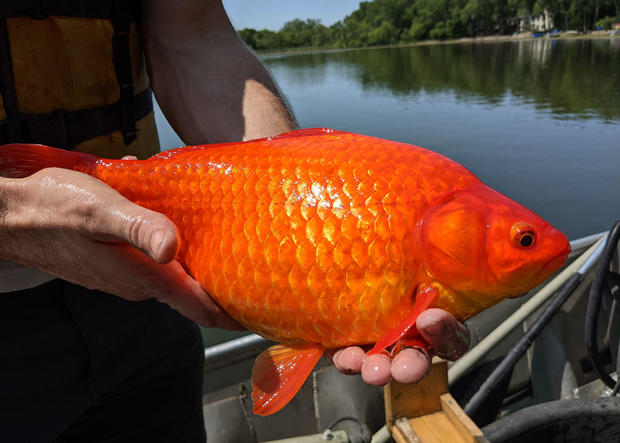Giant goldfish and connected ecosystems
There was a fascinating article about giant goldfish being found in lakes around the United States.
Those innocent looking fish grow to between 0.2 to 0.6 pounds in a tank. But, when fish owners dispose them in the wild, they can grow up to 30-40 times bigger. Here is an example.

Here’s another example to get a sense of size.
As is the case with species that aren’t part of the natural ecosystem, these goldfish are invasive and end up messing with the ecosystem within these lakes. Disposing these fish in lakes is now illegal in many states.
A few months ago, there was a remarkable paper posted about the influence of the 2019 wildfires in the Amazon on global climate. While deforestation was thought of as the only contributor to these fires, the researchers showed that climate analogies originating in the Indian ocean likely was ~40% contributor to the problem.
This is a particularly powerful finding because deforestation in the Amazon causes climate anomalies all over the planet. When said climate anomalies come back to affect the Amazon, it speaks to just how connected the global ecosystem is.
Deforestation in the Amazon is a particularly sensitive global issue because the Amazon used to be one of the world’s largest carbon sinks. However, that is sadly no longer true. In an ingenious study (paper, article), a research team studied the Carbon dioxide and Carbon Monoxide profile of parts of the Amazon between 2010 and 2018. And, they’ve found that the South Eastern Amazon is now a Carbon source rather than a Carbon sink.
That’s both the powerful and challenging thing about understanding ecosystems – especially that on our planet. Things are more connected than we think. There’s more nuance than we think. And the balance is more delicate than we think.







